Galactic Center Group is headquartered at UCLA with additional members at University of Hawaii's Institute for Astronomy,
California Institute of Technology, Keck Observatory and Thirty Meter Telescope.
Director
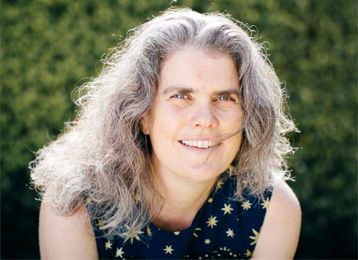
Andrea Ghez
Professor Andrea M. Ghez earned her B.S. in Physics from MIT in 1987 and her Ph.D. from Caltech in 1992, and has been on the faculty in the Department of Physics and Astronomy at UCLA since 1994. Professor Ghez has actively disseminated her work to a wide variety of audiences through more than 100 refereed papers and 200 invited talks, as well as features in textbooks, documentaries, and science exhibits. She has received numerous honors and awards including being the first woman to receive the Crafoord Prize, receiving the MacArthur Fellowship , and being elected to the National Academy of Sciences and the American Academy of Arts & Sciences. Professor Ghez has also served on committees for NASA, the National Science Foundation, and the National Academies of Science, among others.
Professor Ghez is a world-leading expert in observational astrophysics and has used the Keck telescopes to suggest the existence of a supermassive black hole at the center of our galaxy, with a mass 4 million times that of our sun. She is currently using and developing high spatial resolution imaging techniques to study star formation and investigate the proposed massive black hole at the center of our Galaxy. Using Interferometric techniques and Adaptive Optics, Professor Ghez has been able to produce diffraction-limited images of astronomical objects that has up to the development of Adaptive Optics been impossible to observe with ground based telescopes.
Email:
Website
Leadership
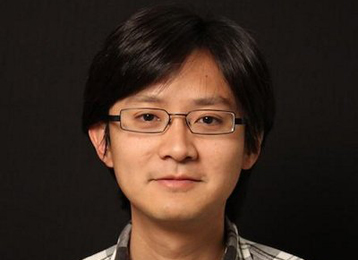
Tuan Do
Professor Tuan Do is the Deputy Director of the Galactic Center Group. He received his B.A. in Physics and Astrophysics from the University of California, Berkeley in 2004 and his Ph.D. in Astronomy from the University of California Los Angeles in 2010. He was a TMT Fellow at UC Irvine and a Dunlap Fellow at the University of Toronto. He is currently an Assistant Research Scientist at UCLA. Dr. Do's research interest is in understanding the formation of the nuclei of galaxies. He is currently studying the composition and star formation history of the Milky Way nuclear star cluster and how these stars interact with the supermassive black hole at the Galactic center. Dr. Do's interests lie in the the dynamics of nearby Milky Way dwarf galaxies and how they can be used to study cosmology. He utilizes both the space-based telescopes such as the Hubble Space Telescope, and adaptive optics on ground-based telescopes like the Keck Telescopes and Gemini to obtain precise photometry and kinematics. Dr. Do has also been working on a data simulator and science cases for the Infrared Imaging Spectrograph (IRIS) for the future Thirty Meter Telescope (TMT). Tuan is currently an Assistant Professor at UCLA.
Email:
Website

Mark Morris
Professor Mark Morris received his Bachelors in 1969 from the University of California, Riverside and his Ph. D in Astronomy in 1975 from the University of Chicago. He held a position as an Assistant Professor at Columbia University, the Department of Astronomy from 1977 to 1982, prior to joining the Department of Physics and Astronomy at UCLA in 1983. He has been studying the innermost regions of our Milky Way Galaxy for over 40 years, has more than 255 authored and co-authored papers published in refereed journals, and is the co-author of three text-books.
Professor Morris co-discovered the magnetic filaments that pervade this Galactic region, which led to a new area of research within astronomy. He is also the co-discoverer of the ‘Double Helix’ Nebula , as well as the bipolar X-ray lobes that appear to have resulted from mass outflows near the central black hole. Professor Morris’ other areas of research include mass loss from red giant stars, planetary nebulae, interstellar molecules, and star formation. Read more.
Email:
Website

Jessica Lu, University of California, Berkeley
Professor Jessica Lu earned her Bachelors in Physics at the Massachusetts Institute of Technology in 2000 and her Ph.D. in Astronomy from the University of California Los Angeles in 2008. She is currently an Associate Professor of Astronomy at the University of California, Berkeley. Dr. Lu was the recipient of both the NSF Postdoctoral Fellowship as well as the CalTech Millikan Postdoctoral Fellowship. Prior to Berkeley, she was an Assistant Astronomer at the Institute for Astronomy at the University of Hawaii. She is the Project Scientist for the ‘imaka Project as well as a member of the science and astrometry teams for the IRIS instrument on the Thirty Meter Telescope. Dr. Lu is an expert in astrometry and adaptive optics and is involved in a number of projects to develop next-generation AO systems.
Dr. Lu studies star formation in extreme environments such as in the cores of massive (greater than 10,000 solar masses) star clusters and around the supermassive black hole at the center of the Milky Way. These are ideal targets for understanding whether environment changes the star formation process and changes the resulting distribution of stellar masses known as the initial mass function (IMF).
Email:
Website
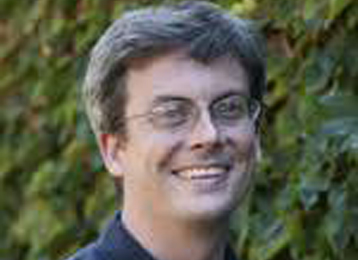
Mike Fitzgerald
Professor Mike Fitzgerald received his B.S. in Engineering and Applied Science from the California Institute of Technology in 2000 and his Ph.D. in Astrophysics from the University of California, Berkeley in 2007. Professor Fitzgerald joined the UCLA Department of Physics and Astronomy as an Assistant Professor in 2009 and works as a member of the UCLA Infrared Laboratory on various projects. Professor Fitzgerald held the Michelson Postdoctoral Fellowship from 2007-2010 and was awarded the AAAS Newcomb Cleveland Prize in 2010.
Professor Fitzgerald’s research focuses on the interface between technical capability and scientific advance, particularly in the areas related to the use of adaptive optics and other advanced optical and infrared instrumentation. Many of the problems Professor Fitzgerald is now working on are related to the structure of the adaptive-optics point-spread function, particularly in relation to high-contrast imaging of exoplanets and debris disks, as well as astrometry in the Galactic Center.
Email:
Website
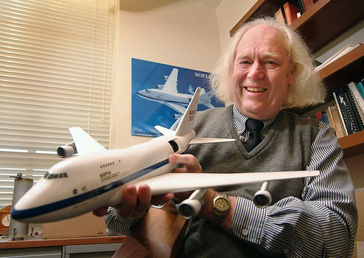
Eric Becklin
Professor Eric Becklin earned his Bachelor of Science from the University of Minnesota in 1963, and received his Ph.D in physics from the California Institute of Technology in 1968. He held research fellowships and research positions at CalTech from 1970 - 1977, was a faculty Astronomer at the Institute of Astronomy, University of Hawaii from 1977 - 1989, and has been a professor in the Department of Physics and Astronomy, UCLA since 1989. Professor Becklin was the Chief Scientist on SOFIA from 1996 - 2008, as well as the first director of the NASA Infrared Telescope Facility (IRTF) on Mauna Kea, Hawaii. He is a recipient of the Newton Lacy Pierce Price, the Guggenheim Fellowship, and was elected into the American Academy of Arts & Sciences in 2009.
Professor Becklin is internationally recognized for his expertise and research in infrared astronomy. He is widely known for his discovery along with Professor Gerry Neugebauer of indentifying the location of the center of our Galaxy. By measuring infrared radiation from stars he realized that the peak in the amplitude compared to the rest of the Milky Way was the very core of our Galaxy. Professor Becklin's primary focus is in the area of infrared imaging and spectroscopy and his research uses UCLA instrumentation developed in collaboration with Prof. McLean, as well as facility instrumentation at the University of California's Lick and Keck (10 meter) observatories. Read more...
Email:
Website
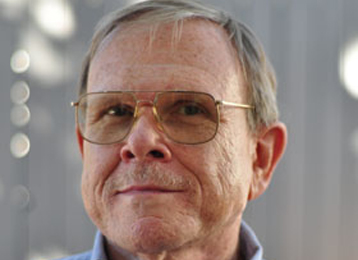
Keith Matthews, California Institute of Technology
Keith Matthews built both the imaging camera that we use: NIRC (1995 - 2005) and NIRC2 (2004-present). He was awarded the Weber prize from AAS in 2013: “The reliability, sensitivity and innovative qualities of his instruments have enabled ground breaking scientific discoveries for decades”.
Many of his recently instrumentation efforts have been in collaboration with UCLA’s IR Lab, including NIRC2, for which the IR Lab delivered the electronics, and MOSFIRE, which was led by Ian McLean and delivered to Keck Observatory in 2012.
Email:
Website
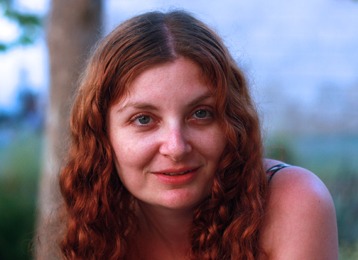
Smadar Naoz
Professor Smadar Naoz received her B.S. in Physics in 2002 from the Hebrew University of Jerusalem and her Ph.D. in Physics in 2010 from the Tel Aviv University. She has held a position as Assistant Professor at UCLA since 2014. She has been awarded many fellowships and prizes including the Einstein Fellowship in 2012, the ITC-Harvard prize Fellowship in 2011, the Gruber Foundation Fellowship in 2010, and the National Postdoctoral Award Program for Advancing Women in Science in 2009.
Over the past few years Professor Naoz has worked on a wide range of dynamics research problems covering topics from cosmology to extrasolar planets. During her PhD she studied the formation, evolution and properties of the first generations of galaxies and 21cm fluctuations. While she was a graduate student, she was intrigued by the theoretical challenges and problems in the dynamics of our solar and extra-solar planetary systems and decided to pursue those as well. This part of her work was further enhanced these past years where she has studied the dynamical evolution of Hot Jupiters. Most notably, Professor Naoz has found a new mechanism that, not only produces Jupiter like planets in a very close proximity to the star, but can also explain the eccentric and even retrograde observed systems. This mechanism raises many interesting research questions, which are applicable to a diverse range of astrophysical systems at different scales.
Email:
Website
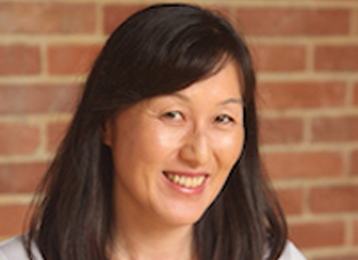
Shoko Sakai
Dr. Shoko Sakai is an Associate Research Astronomer and Associate Adjunct Professor at UCLA. She received her B.A. in Physics from Cornell University and her Ph.D. in Physics and Astronomy from Dartmouth College. She then joined the HST Key Project on the extragalactic distance scale at IPAC and continued her work on distance scale at NOAO in Tucson. She has been a research astronomer at UCLA since 2000. Her work focused on several distance indicators and understanding their systematics, including the Cepheid variable stars, tip of the red giant branch method and Tully-Fisher relation for spiral galaxies. She also worked on star formation history of galaxies in nearby clusters of galaxies. More recently, she has joined the Galactic Center Group and has been working on establishing the reference frame for the Galactic center orbit study..
Email:
Website
Members
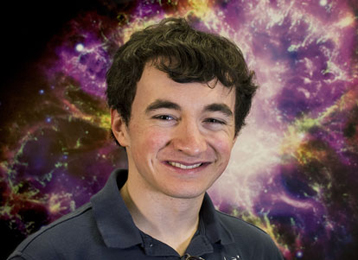
Rory Bentley
Rory received his Bachelor’s in physics from Louisiana State University and worked at the National Radio Astronomy Observatory before coming to UCLA in 2018. He is currently a graduate student in the Galactic Center Group, using high-resolution spectroscopy to study stellar metallicities in the galactic center region to better understand its formation history.
Email:

Randy Campbell, W.M. Keck Observatory
Randy Campbell received his B.S. in Electrical Engineering from the South Dakota School of Mines and Technology and his M.S. in Astronomy from San Diego State University in 1992. Randy is the adaptive optics (AO) operations lead at Keck where he provides scientific and technical leadership for the AO operations team to maximize the scientific output of the AO facilities. Randy plays a key role in bridging science and technology of the Laser Guide Star Adaptive Optics for Keck.
Randy’s research interests are primarily involved with the infrared studies of classical novae, a class of cataclysmic variable stars. Spatially resolved imaging and integral field observations of novae enable the accurate determination of fundamental properties of these objects. High angular resolution affords the earliest possible glimpses of the nova’s ejecta morphology and will lead to refined estimates of the mass ejected in nova events; an important factor in knowing whether the white dwarf is gaining or losing mass over a long sequence of many nova events. Mass loss verses mass gain is a fundamental question as to whether or not these objects may be the long sought after progenitors of Type 1A supernovae. Randy also contributes significantly to instrumentation research at Keck specializing in detector technology in the infrared and visual wavelengths. He is published in the field of observatory operations and visualization of scientific data. He is very active in public outreach and education.
Email:
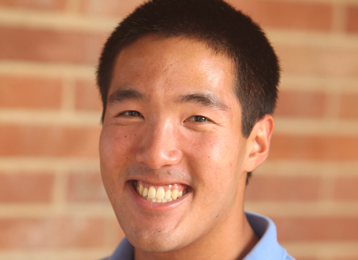
Devin Chu
Dr. Devin Chu is a postdoctoral researcher working with the Galactic Center Group. His research focuses on searching for binary stars using integral field spectroscopy with adaptive optics. Devin received his B.A. in Physics and Astronomy from Dartmouth College in 2014 and his Ph.D. in Astronomy and Astrophysics from the University of California, Los Angeles in 2020.
Email:
Website
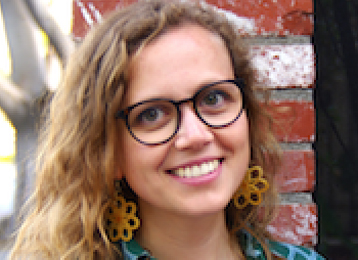
Anna Ciurlo
Dr. Anna Ciurlo is an Assistant Researcher with the Galactic Center Group at UCLA. Dr. Ciurlo received her B.S. and M.Sc. in Physics from the University of Genoa in Italy. She earned her PhD in astronomy at the Observatoire de Paris - Sorbonne Paris Cité in France in 2015. Dr. Ciurlo primary research’s interest is to study how the complex environment of the center the Galaxy affects the interstellar medium. She study the gas physical and dynamical conditions through imaging-spectroscopy data. Dr. Ciurlo is also involved in the development of post-processing tools for adaptive optics data.
Email:
Website

Abhimat Gautam
Dr. Abhimat Gautam is a postdoctoral researcher working with the UCLA Galactic Center Group. His research focuses on studying the stellar population and the dynamical environment of the Milky Way Galactic Center, primarily using stellar photometry with adaptive optics imaging. Dr. Gautam received his B.A. in Physics and Astrophysics from the University of California, Berkeley in 2014 and his Ph.D. in Astronomy and Astrophysics from the University of California, Los Angeles in 2020.
Email:
Website

Aurélien Hees
Dr. Aurélien Hees is currently a researcher at Paris Observatory and has been at the forefront of the relativistic modeling of astrometric, radar and radioscience observations and of tests of the gravitation theory since his graduate career. He earned two master degrees in Engineering from the Université Catholique de Louvain (Belgium) and from the Ecole Centrale de Paris (France).
Afterwards, he earned his PhD from the Université Catholique de Louvain (Belgium) in 2012 before joining the NASA-Jet Propulsion Laboratory (California Institute of Technology) for a year. He then spent two years at Rhodes University (South Africa) as a postdoctoral researcher and two years with the UCLA Galactic Center Group.
Dr. Hees is involved in the development of high accurate relativistic modeling required for future space missions and astrometric observations. He is also involved in the development and the data anaysis tests of the gravitation theory using observations performed at different scales in our Universe: within the lab with atomic clocks, around the Earth with Lunar Laser Ranging, Very Long Baseline Interferometry, GNSS satellites, at Solar System scales with space mission measurements, at galactic scales by using observations of short period stars orbiting our Galactic Center as well as at the cosmological scale.
Email:

Zoë Haggard
Zoë received her bachelor’s in physics from Pomona College in 2021 where she worked on projects ranging from VLBI to gravitational wave physics. She is currently a graduate student in the Galactic Center Group and is working on multiwavelength studies of stars in the galactic center.
Email:
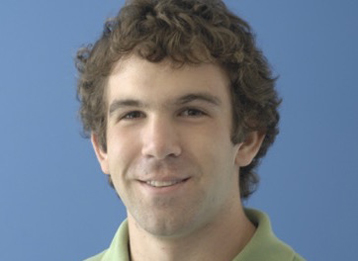
Matthew Hosek
Dr. Matthew Hosek is currently a Postdoctoral Researcher with the Galactic Center Group at UCLA. He received his degree from the Institute for Astronomy at the University of Hawaii at Manoa in 2018.
Matt studies star formation and star cluster dynamics in the extreme environment of the Galactic Center, in particular the Arches, Quintuplet, and Nuclear Star Clusters.
Email:
Website

Kelly Kosmo O'Neil
Kelly Kosmo O’Neil is a PhD student working with Andrea Ghez and Tuan Do as part of the UCLA Galactic Center Group. She received her B.S. in Astrophysics at UCLA in 2015. Her research focuses on improving orbit estimates for stars in the Galactic center that have orbital periods much longer than the time baseline of observations. She has extended this methodology from the Galactic center to likewise improve orbit estimates of directly imaged exoplanets.
Email:
Website
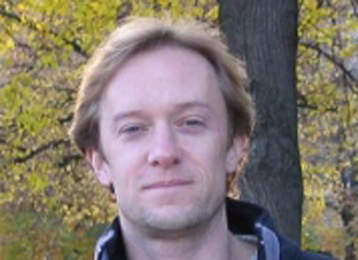
James Larkin
Professor James Larkin received his B.S. in Physics and Mathematics from the California State University at Hayward in 1990 and his Ph.D. in Astrophysics from the California Institute of Technology in 1996. After holding the Robert R. McCormick Postdoctoral Fellow at the University of Chicago, he joined the Department of Physics and Astronomy at UCLA as a professor in 1997. Professor Larkin currently serves as Deputy Director of the Infrared Laboratory at UCLA.
Professor Larkin’s research focuses on extragalactic astrophysics, adaptive optics (AO) and infrared instrumentation. Professor Larkin’s research group has often developed cutting edge systems to make first-of-their-kind observations. They were the first to observe cosmologically distant field galaxies with a Shack-Hartmann AO system in order to directly observe galaxy evolution and the first to apply speckle suppression techniques to look for planets around other stars. The instruments that Professor Larkin has helped to build have allowed other scientists to make an impressive set of “first” measurements like the first precipitation on another world, and the first spectrum of a directly imaged exoplanet.
Professor Larkin has recently completed work on the spectrograph for the Gemini Planet Imager and is devoting much of his time now to the development of the Integral Field Spectrograph (IRIS) for the Thirty Meter Telescope (TMT). The IRIS instrument will work at the unprecedented diffraction limit of TMT and enable a wide variety of scientific observations.
Email:
Website
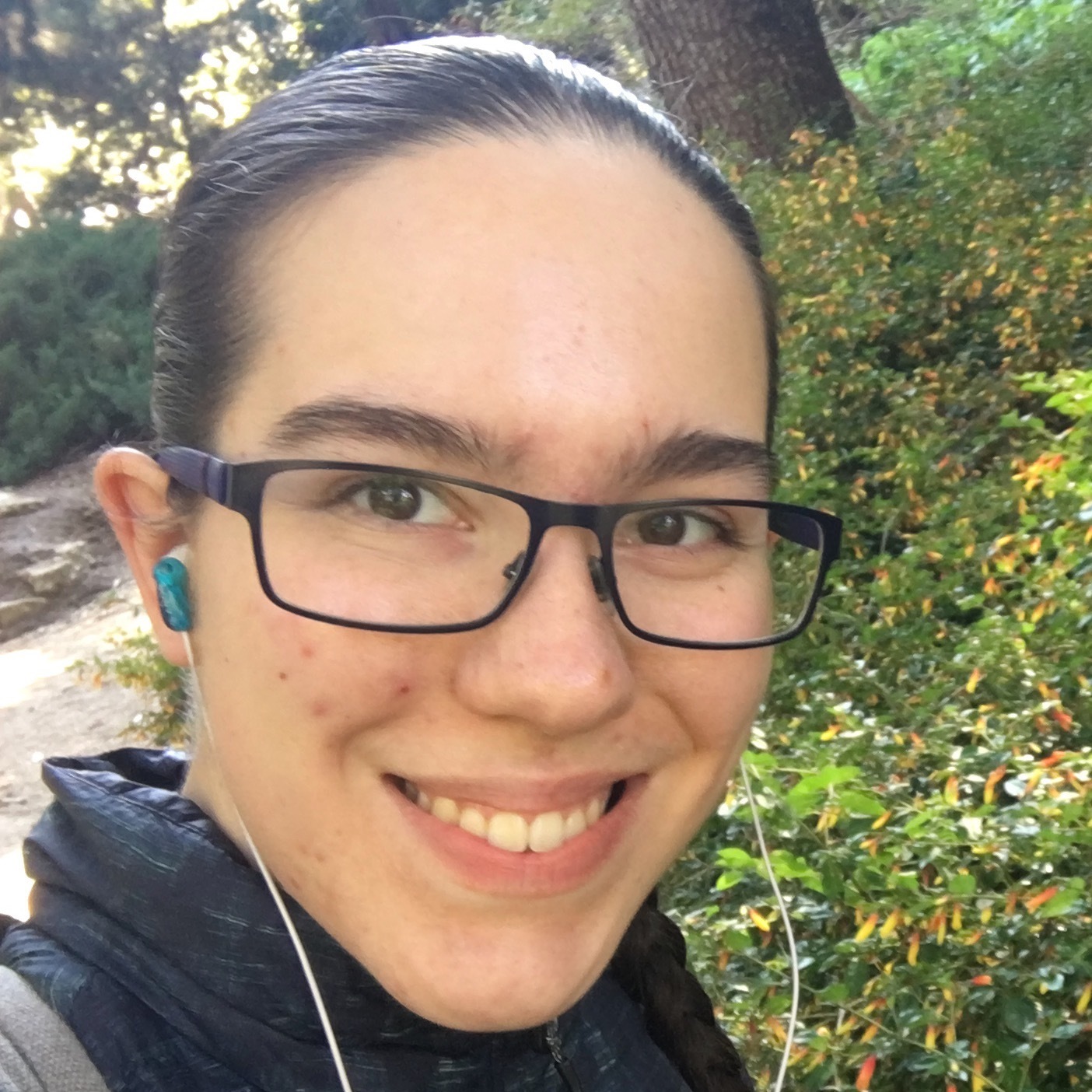
Rebecca Lewis-Merrill
Rebecca Lewis-Merrill is a PhD student working with Tuan Do in the Galactic Center Group. She received her B.S. in Astrophysics from UCLA in 2020. Her research focuses on reflex motion of the supermassive black hole Sagittarius A* and the kinematics of Galactic Center stars in the Gaia-Celestial Reference Frame.
Email:
Website
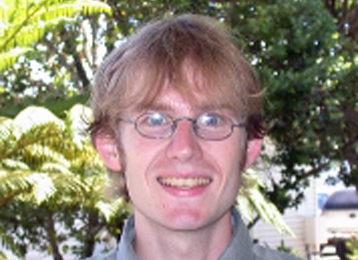
Jim Lyke
Dr. Jim Lyke received his B.S. in Astrophysics in 1997 and his Ph.D. in Astrophysics in 2003 from the University of Minnesota. Dr. Lyke currently works at the W. M. Keck Observatory as a support astronomer, ensuring visiting scientists receive their data. As an instrument master, he is responsible for maintenance and operation of optical and infrared instrumentation. Dr. Lyke’s research interests include classical novae. Using Adaptive Optics, Dr. Lyke is interested in how the dust and/or emission lines are distributed in the expanding shell of the outburst. In supporting observations, Dr. Lyke enjoys working with many different cutting-edge research projects in all areas of astronomy, including solar system objects, stars, the Galactic Center, and even galaxies at z > 9.
Email:
Website
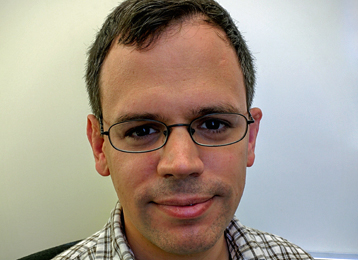
Greg Martinez
Dr. Gregory Martinez recieved his B.S. in Physics and Mathematics from the University of California, Riverside in 2003 and his Ph.D. in Physics from the Unversity of California, Irvine in 2010. Dr. Martinez's research primarily focused on dark matter research, particularly concerning dark matter content in the local group, as well as application of statistical methods to astronomical data. Recent projects include applying Bayesian hierarchical modeling methodologies in determining the dark matter distribution of nearly dwarf galaxies, dynamical modeling of the Galactic nuclear star cluster, and development of generic and modular statistical software used to perform combined multidisciplinary global parameter searches. For the galactic center group, he is involved in developing and improving objection detection and reference frame construction statistical methodologies.
Email:

Grant Weldon
Grant Weldon is a PhD student in the Galactic Center Group. His research focuses on characterizing the variable near-infrared emission from the Milky Way’s supermassive black hole to study black hole accretion flows and investigate the origin of recent bright flares. Before coming to UCLA, he received his B.S. in physics from the University of Michigan, Ann Arbor.
Email:
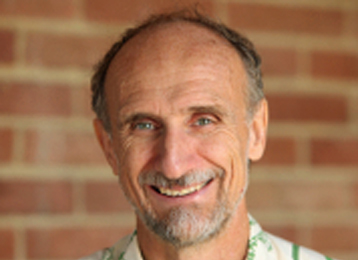
Peter Wizonowich, W.M. Keck Observatory
Dr. Peter Wizinowich received his B.Sc. (physics and astronomy) and M.A.Sc. (engineering) from the University of Toronto, and a Ph.D. in Optical Sciences from the University of Arizona. He has worked as a resident astronomer at the University of Toronto Southern Observatory, an instrumentation technician at the Canada-France-Hawaii telescope, and a staff scientist at the University of Arizona’ Steward Observatory. He has been the Optical Systems Manager at W. M. Keck Observatory (WMKO) since 1991. He has also served as committee chair for AO conferences and design reviews for other observatories.
Dr. Wizinowich has been active in AO since 1989 when he started the Steward Observatory adaptive optics group with Roger Angel. During his time at WMKO, he has played a lead role in the installation and alignment of the telescope optics, the design and implementation of the Keck adaptive optics (AO) systems and the implementation of the Keck Interferometer. Dr. Wizinowich has worked to continually improve the Keck AO systems as principal investigator for grants from the W.M. Keck Foundation and the National Science Foundation, and has been leading the effort to design WMKO’s next generation AO system.
Email:
Website
Administrative Staff
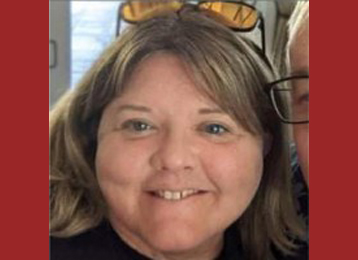
Wendy Ravenhill, Galactic Center Administrative Assistant
Dedicated and trustworthy executive/administrative assistant/graphic designer professional with many years of experience. A proven history of providing comprehensive support and continually exceeding employer expectations. Organized and deadline conscious individual who is equally comfortable dealing with vendors, staff, students and clients. Motivated and innovative leader, who values confidentiality. Also, has a unique ability for staying on top of issues, deliverables, and escalations to ensure the timely resolution of issues.
Email:
Website

L. Juleen Moon, Business and Communications Manager
Juleen Moon received her B.S. in Astrophysics from UCLA in 1995. She has worked in administration, event planning, and business management at UCLA since 1997 and has co-edited two scientific journals. She manages all administrative operations and activities for the UCLA Galactic Center Group, including personnel, finances, donor relations, and contract and grant management.